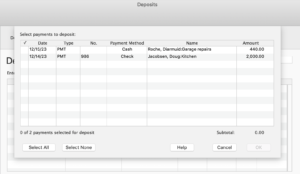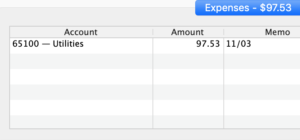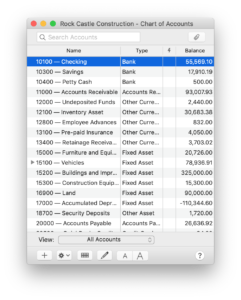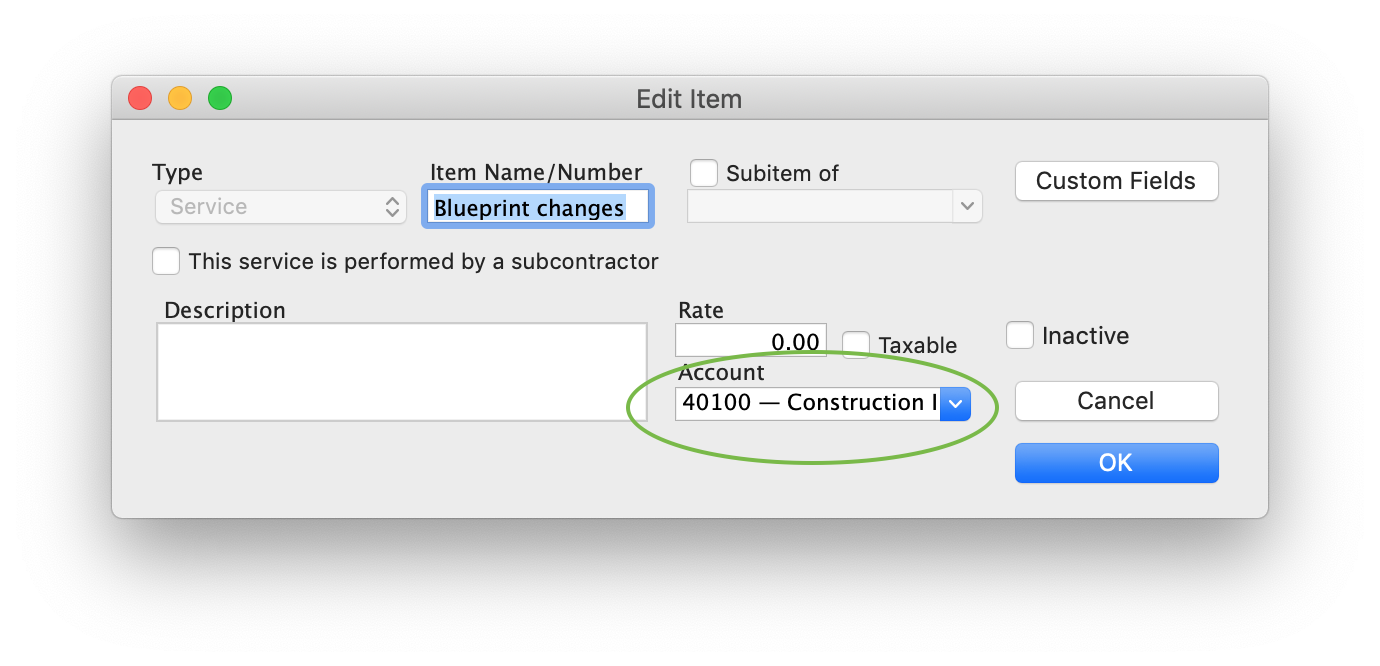 Editor’s note: Our friends over at QuickBooks for Windows wrote this piece for Windows users. Seeing a great idea, we ripped it off and Mac-ified it for you. Here’s a shout out to the awesome Jonathan Brubaker who created the original article for Windows.
Editor’s note: Our friends over at QuickBooks for Windows wrote this piece for Windows users. Seeing a great idea, we ripped it off and Mac-ified it for you. Here’s a shout out to the awesome Jonathan Brubaker who created the original article for Windows.
If you’re new to QuickBooks, now is the time to get off on the right foot. We’ve seen some common newbie mistakes and listed them here so you know what to avoid. Don’t forget, you’ve got places to go for answers if you have questions:
- First, there’s Little Square, where you are now. Check out the Square One menu for New to QuickBooks.
- In QuickBooks, check Help. (Choose Help > QuickBooks Help)
- Ask other users and QuickBooks experts on the QuickBooks for Mac Community.
- Look on our support site for helpful information like multiuser troubleshooting.
- Or if you want one-on-one assistance, consider finding a ProAdvisor to help guide you.
Don’t use the sample files as your actual company fileQuickBooks provides sample files you can use as examples for setting up your own QuickBooks company data file. These files are examples, not templates. They contain only a limited set of items and services typically performed by particular types of businesses. Use them to see how a file might be set up and to learn how QuickBooks works. Do not try to use these files for your live information; they won’t work for that purpose. You must create your own company file to store your accounting data. (Choose File > New Company and follow the screens.) |
Don’t write a check and forget to apply the payment to the bill
Here’s what to do:
|
When you enter invoices and then make a deposit, be sure to use Receive Payments
|
Don’t accidentally record your customer payments twiceWhen you receive a payment for an invoice and enter it in the Receive Payments window, QuickBooks automatically selects “Group with other undeposited funds.” Sometimes people do this but then also make a separate deposit for the same amount, and that makes a mess of their records. Instead, when you choose Banking > Make Deposits, be sure to select the payment on the Payments to Deposit window. This will move it from undeposited funds to the bank account you select.
|
Don’t choose your bank account in the Expense Account field when writing a check
|
Don’t rename or delete the critical accounts that QuickBooks automatically creates
QuickBooks automatically sets up other accounts as well: Accounts Receivable, Cost of Goods Sold, Estimates, Inventory Assets, Payroll Liabilities, Payroll Expenses, Purchase Orders, Retained Earnings, Sales Tax Payable, and Undeposited Funds. Moving or editing these accounts can easily introduce errors to your financial records. Worst case: You might have to dedicate hours (or days!) recreating these accounts and correcting all the errors, and we bet you’ve got better things to do! |
Don’t assign items to the wrong kind of accountIn QuickBooks, if you buy it or sell it then it’s an item. Items can also be shipping and handling charges, discounts, and sales tax, if applicable. Think of the line items on an invoice. For your records to be accurate, you need to associate every item you create with an account and account type that make sense. For example, any item you sell must be assigned to the right income account. (Generally, Balance Sheet accounts – such as Bank, Accounts Receivable, Accounts Payable, Credit Card, etc. – would not be assigned to items.) |


 QuickBooks gives you options for paying your bills, depending on how closely you want to track bills and payments. Once you’ve chosen a method for a particular bill, you need to stick with it — otherwise you might end up paying your bills twice.
QuickBooks gives you options for paying your bills, depending on how closely you want to track bills and payments. Once you’ve chosen a method for a particular bill, you need to stick with it — otherwise you might end up paying your bills twice. If you are entering invoices in QuickBooks to record your sales, be sure to use Receive Payments to apply the payment against the invoice. Sometimes people make the mistake of skipping that step. But if you go right to the Make Deposits screen, the invoice won’t show as paid, and your sale might end up being counted twice.
If you are entering invoices in QuickBooks to record your sales, be sure to use Receive Payments to apply the payment against the invoice. Sometimes people make the mistake of skipping that step. But if you go right to the Make Deposits screen, the invoice won’t show as paid, and your sale might end up being counted twice.
 When they’re using the Write Checks window, sometimes users don’t realize that the check is already affecting their bank account, so they select their checking account as the expense account. This causes the money to go out and immediately back into your checking account instead of reducing the checking balance. Typically, you want to specify one of the expense accounts you’ve set up, such as Utilities, not the bank account the check is drawn on.
When they’re using the Write Checks window, sometimes users don’t realize that the check is already affecting their bank account, so they select their checking account as the expense account. This causes the money to go out and immediately back into your checking account instead of reducing the checking balance. Typically, you want to specify one of the expense accounts you’ve set up, such as Utilities, not the bank account the check is drawn on. To simplify the job of setting up your company file, QuickBooks creates critical accounts like Retained Earnings and Sales Tax Payable for you. Changing the names or account types it assigns, or moving these accounts, can seriously impair QuickBooks’ ability to work for you.
To simplify the job of setting up your company file, QuickBooks creates critical accounts like Retained Earnings and Sales Tax Payable for you. Changing the names or account types it assigns, or moving these accounts, can seriously impair QuickBooks’ ability to work for you.


